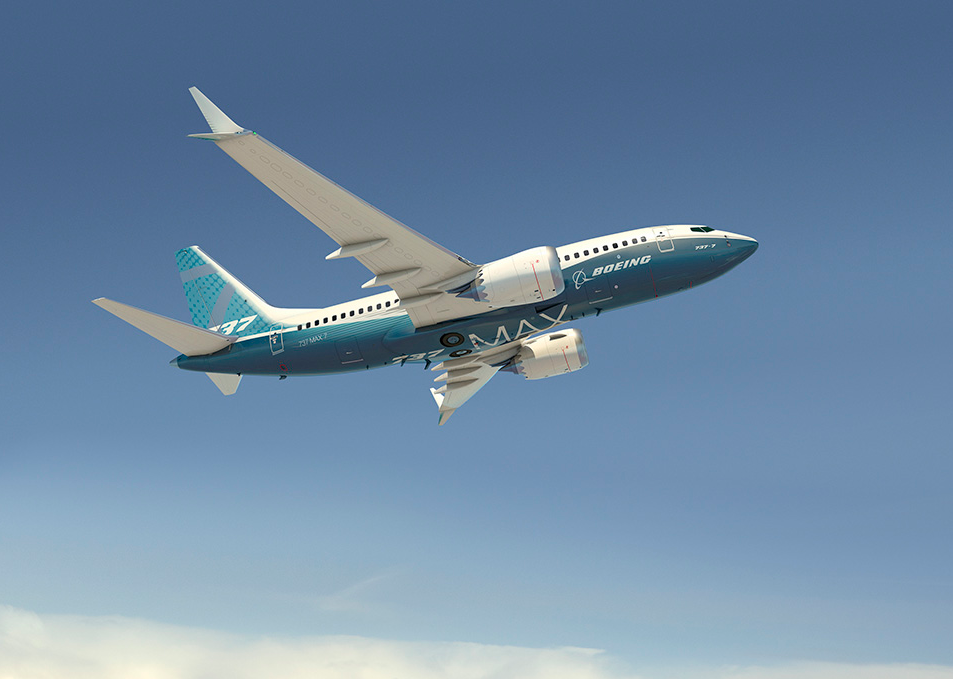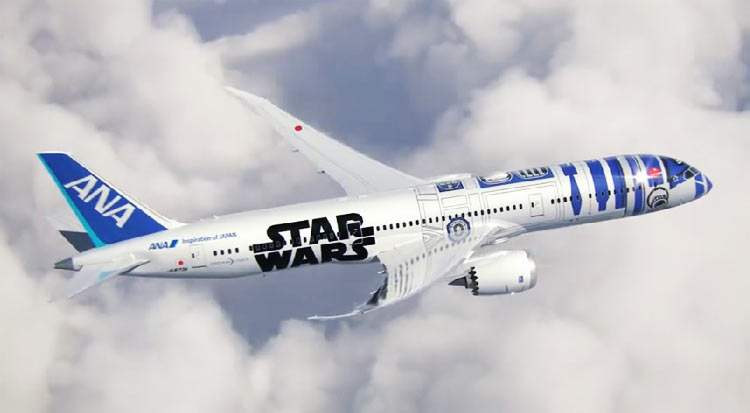Leeham News and Analysis
There's more to real news than a news release.
Bjorn’s Corner: Transponders, the kingpin of safe air navigation
May 19, 2016, ©. Leeham Co: In my recent Corners, I have been describing how a modern airliner navigates using a Flight Management System, (FMS or Computer, FMC) to navigate along the flight plan and how it finally uses an instrument landing system to safely land the aircraft even in bad weather.
When looking into instrument landing systems, we have described the legacy systems which require large ground installations (such as ILS) and how these can be replaced in the future with smarter concepts using GPS based procedures.
I will now continue on this path and describe some of the additional cornerstone technologies needed to implement a modernized Air Traffic Control (ATC) system, which can replace today’s systems that have their roots in World War 2 (WW2) technology.
We will start today with how aircraft can be seen from the ground or other aircraft without visual sight or Radar contact. Read more
Areas of inquiry in Egyptair 804 crash
May 19, 2016: (c) Leeham Co.: Investigators will look into many areas of interest, all a

An Airbus A320 like this one operated by Egyptair disappeared last night in what is already suspected terrorism. Photo via Google images.
matter of routine, into the disappearance and crash of Egyptair 804.
According to media reports, debris and bodies have been found in the Mediterranean Sea. The Airbus A320 disappeared on a flight from Paris to Cairo. There have been several media reports of in-flight fire observed in the sky and maneuvers of the aircraft. Russian officials and others say terrorism is likely.
LNC urges caution in drawing conclusions, however.
The following are areas of investigation:
How good is a MAX 7X and why would it replace the original? Part 3
By Bjorn Fehrm
Subscription required
Introduction
May 16, 2016, ©. Leeham Co: In Part 1 and Part 2 of the article series we have described the rational for Boeing to change the definition of the 737-7 MAX into something that has the working name of 737-7X. This is a 737-7 variant that is based on a shortened 737-8.
In the previous articles we defined a probable size for such a cut down 737-8. The size is determined by economical criteria where the second most dominant cost in an airlines operation, the crewing cost, is the sizing criteria. These costs have a step increase if the aircraft’s seating go beyond 150 seats.
We sized the 737-7X cabin size (and therefore fuselage length) to avoid such cost increases. In this article, we will compare the resulting main data for a 7X to the original 7 and compare their fuel efficiencies.
Summary
- A 737-7X will be a larger and heavier aircraft than the original MAX 7.
- As such it will consume more fuel per mission; its aircraft fuel mile costs will be higher.
- The key comparison for an airline is the fuel consumption per seat mile for its missions. It would be vital that this is lower for a 7X than the presently defined 7.
- We check if this is the case with our proprietary performance model.
Mitsubishi’s MRJ test flying making good progress
By Bjorn Fehrm in Tokyo
May 18, 2016, ©. Leeham Co: Mitsubishi Aircraft Corporation (MAC) announced that their MRJ flight test program is now going well. Mitsubishi presented the status update at the International Society of Transport Aircraft Traders conference (ISTAT 2016 Asia) in Tokyo.
Mitsubishi Aircraft rocked the confidence of the market with announcing a delay in their program of over a year before Christmas. At the same time, MAC also announced that they will rebuild their test aircraft as they had seen that the original design did not meet ultimate load criteria.
As presented in one of my Friday Corners, that announcement was being too forthcoming. Other OEMs would not have informed the market of the minor modifications needed to make the aircraft able to withstand ultimate load (150% of the highest load the aircraft should ever see in service).
MAC’s Director of Strategic Marketing, Hideyuki Kamiya, gave an update of the flight test program at the conference and later answered some specific questions from LNC on the sidelines of the conference. Read more
Air freight continues to lag, IATA says
 March 18, 2016: The air cargo market continues to struggle, according to data compiled by the International Air Transport Assn. (IATA) in its first quarter report for information primarily in the fourth quarter and full year of 2015.
March 18, 2016: The air cargo market continues to struggle, according to data compiled by the International Air Transport Assn. (IATA) in its first quarter report for information primarily in the fourth quarter and full year of 2015.
Freight capacity in the bellies of passenger airliners far outstripped main-deck cargo capacity, IATA reports. Load factors for main deck freighters continue to hover in the low 40% range, IATA data shows, extending a long trend. But capacity was also added during the period as freighters emerged from storage, adding to global capacity.
ANA CEO opens ISTAT Asia 2016
By Bjorn Fehrm in Tokyo
May 18, 2016, ©. Leeham Co: The CEO of All Nippon Airways (ANA) Osamu Shinobe opened the 2016 International Society of Transport Aircraft Trading (ISTAT) conference in Tokyo today, in front of some 700 delegates. Shinobe presented an overview of the airline’s recent success and its future plans. This includes the plans for use of the three Airbus A380 that the airline bought in January this year.
ANA is Japan’s most successful carrier in recent years, leading the incumbent Japan Airlines in revenue and profits since 2010. The airline had its historical base in a large domestic market share but has been complementing that with an aggressive international expansion in recent years.
Its landmark buy of Boeing 787 Dreamliners shall be seen in this context. The 787, for which ANA was the launch customer, is the kingpin in ANA’s expansion plans, where an expanding international network shall feed the established domestic network. Read more
Pontifications: Improbably, 787 surplus develops
May 16, 2016, © Leeham Co.: As improbable as it sounds, a short-term surplus of Boeing 787s has developed, say several market officials. Lease rates in some cases on 787-8s and 787-9s have dropped below $900,000/mo for 787-8s and somewhat above this figure for 787-9s as lessors compete with Boeing to place airplanes.
Analysts covering leasing companies, both publicly traded and privately owned, have also heard about falling lease rates for 787s.
“However, this all hinges on the cost and learning curve assumptions, which are difficult to get confident with considering we hear 787 lease rates are under pressure, and there are slots opening up, which can impact timing of future deliveries,” Canaccord wrote in a research note last week after the Boeing Investors Day in which officials outlined the plans to recover $29bn in deferred production costs. Other analysts also report hearing of lease pricing pressure on the 787s.
- Slow sales for the Boeing 787, reports Reuters.
How good is a MAX 7X and why would it replace the original? Part 2
By Bjorn Fehrm
Subscription required
Introduction
May 16, 2016, ©. Leeham Co:In Part 1 we described the driving forces behind Boeing’s investigations into changing the definition of the 737 MAX 7.
There are good reasons to make the -7 model larger. The passenger market is moving the average size of the cabins upwards by about 2-3 seats per year. Boeing therefore made the middle model, the -800 and later the MAX 8 larger than the 737-400. It went from 146 seats in two classes to 162 seats.
But the -700 and therefore the MAX 7 stayed the same size as the predecessor, the -300 at 126 seats. As described in our last article, this is not an ideal size. You don’t amortize the cost of the aircraft’s crew over an optimal number of passengers at normal loadfactors and you have a smaller number of very specific 737-7 in your fleet. We now discuss what would be a more competitive definition for a 737 MAX 7.
Summary
- The 737-700 and MAX 7, as presently defined, is sized at 126 seats two class.
- A more competitive sizing would be closer to 150 seats in order to maximize the utilization of the regulatory mandated aircraft crew resources.
- The exact sizing will depend on how many seats the dominant customer, Southwest Airlines, wants to have in its one class economy seating, which uses a generous seat pitch of 31-32 inches.
Bjorn’s Corner: Landing after navigation, Part 2
13 May 2016, © Leeham Co: Last week we started to describe what is necessary to make a precision approach after a flight. We described the rather elaborate installations needed for the classical precision approach with an ILS system. It requires two transmitters and large antennae installations for each runway.
We will now describe the system which will replace ILS as worldwide instrument landing system, an augmented Global Navigation Satellite System (GNSS), where GPS is the variant provided by the US Department of Defence, Figure 1. Other GNSS are Russia’s GLONASS and Europe’s Galilleo.

Figure 1. The GPS system consists of up to 24 satellites which deliver position, velocity and time. Source: Wikipedia.
The problem with a non-augmented GPS is the precision. Classically the accuracy was worst case any where in the World around 100m horizontally and 150m vertically, but that was when the US military deliberately reduced the accuracy for civil use (Selective Availability). Today this deliberate reduction has stopped and the accuracy is 25m horizontally and 43m vertically worst case.
This is not enough for a precision approach. We will now describe what is done to bring the accuracy to a level where precision approaches can be flown with GPS. Read more






